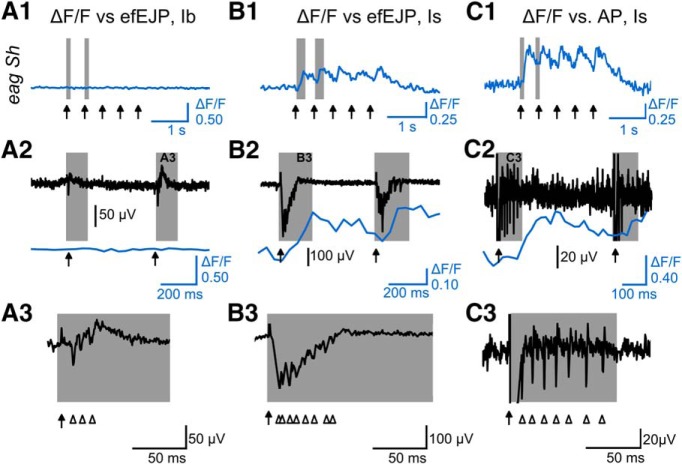Figure 9.
Electrophysiological basis of single pulse-evoked giant GCaMP signals: repetitive firing due to extreme hyperexcitability of the motor axon. GCaMP signals (ΔF/F traces) of type Ib (A1) and Is (B1, C1) synapses from three eag1 Sh120/Y; c164-GCaMP1.3 larvae at 2-Hz stimulation in 0.1 mM Ca2+ HL3.1 saline. Corresponding simultaneous records of efEJPs (A2, B2) and nerve action potentials (C2) are displayed in black with the associated ΔF/F traces in blue (expanded from A1, B1, C1 with individual nerve stimuli marked by arrows). One of the two shaded areas in A2, B2, C2 are further expanded to show efEJPs with multiple peaks (arrowheads), indicative of repetitive nerve action potentials, which were more robust in type Is than Ib synapses (A3, B3). En passant nerve recording revealed motor axon high-frequency repetitive firing (over 100 Hz; C3).

